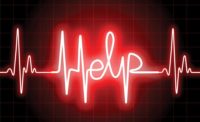
I t may seem counter-intuitive, but the last thing you need to worry about when purchasing an automated external defibrillator (AED) is its shock quality. While delivering a shock to a victim of sudden cardiac arrest (SCA) can mean the difference between life and death, it’s not the shock performance that makes the true difference - the FDA has cleared all AEDs for sale - it’s the response of the rescuer.
In a “man down” situation at a workplace, the lay rescuer must have the confidence and the courage to act swiftly and decisively. This attitude comes only from preparation and training. Therefore, when you’re in the market for an AED, think more about readying potential rescuers than about what box will go on the wall. Yes, there are variations from one AED to the other. But a successful rescue must not be credited to the AED alone but to your overall AED program.
AED program?
Even before the AEDs are put into place, a program needs to be created to help ensure that a rescue will run smoothly from day one and in years to come.
An AED program must support both the AED itself as well as those who will be using it. It is everyone’s hope that an AED will never have to be used. But if it needs to be pulled from the wall in an emergency, it needs to work and it needs to be in capable, confident hands.
A comprehensive AED program encompasses rescuer training as well as maintenance. Both man and machine need to be prepared and on call.
Ready the rescuer
While an AED is designed to be easy to use, a rescue is never simple for the rescuer, especially a lay rescuer. Helping to save someone’s life requires not only the right equipment and skills, but also the presence of mind to stay calm and focused.
This demeanor comes through certified training on both the AED and CPR, since both are critical for successful resuscitation.
According to research, rescuers are advised to shock a victim on the first heart analysis only about half the time.1 If an AED determines that no shock is advised, then what? The most helpful action a rescuer can take is to perform consistent, high-quality CPR. This means performing chest compressions on the victim’s sternum at a rate of 100 per minute at 1 1/2 to 2 inches in depth - the rate and depth the American Heart Association (AHA) recommends. If a rescuer does not provide effective CPR, the chances of a victim surviving cardiac arrest are low.
CPR is also needed for victims who have had a shock administered. Research shows that once a fibrillating heart has been shocked, more than 60 percent of the time it takes more than a full minute to regain an organized heart rhythm.2 For the struggling heart to succeed in reorganizing itself, it needs oxygenated blood, which CPR delivers after the shock is delivered.
Therefore, it is critical that staff be trained in CPR as well as the AED to provide a victim with the highest chance of survival. And since rescues can be few and far between - if at all - it is important to review volunteer responder certification expiration dates and administer regular refresher courses, ideally every two years.
Assess the AED
How do you make sure your AED will work every time, including two years after being hung on the wall? To keep your AEDs in good working order, it is important to put maintenance policies in place and set up a system to ensure compliance. Your maintenance protocol should include:
Let others know
Raising awareness that there are AEDs and trained rescuers onsite is an important - and often overlooked - component of a successful AED program. Make sure staff knows where the AEDs are, which colleagues are trained, and what they need to do if they are interested in being trained as well. To get the word out, post AED locations and rescuers on the company website and write periodic articles in the company newsletter. Alerting the local health department and EMS responder organizations also can help during rescues.
Buying an AED is a critical step in the right direction to help save a life. But the more safeguards you put in place to ensure your equipment and your staff are ready for an emergency, the better the chances are that a victim will survive SCA. Help those who frequent your facility stay safe by establishing a comprehensive AED program.
AED Program Checklist
References
1 AP Hallstrom, JP Ornato, M Weisfeldt. Public- Access Defibrillation and Survival after Out-of-Hospital Cardiac Arrest. The New England Journal of Medicine. 2004;351:644.
2 2005 American Heart Association Guidelines for Cardiopulmonary Resuscitation and Emergency Cardiovascular Care. Circulation. 2005:112 (supplement IV):IV-19.






